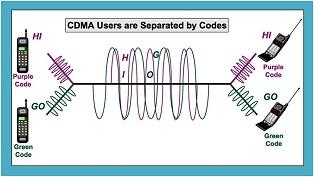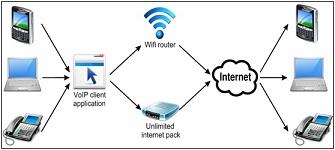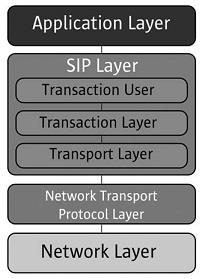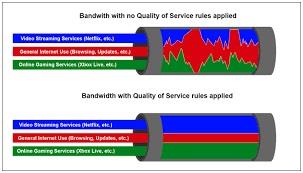ENROL WITH MULTIMEDIA NETWORKING ASSIGNMENT HELP AND HOMEWORK WRITING SERVICES OF EXPERTSMINDS.COM AND GET BETTER RESULTS IN MULTIMEDIA NETWORKING ASSIGNMENTS!
HS1011 Data Communication and Networks - Holmes Institute
Learning outcome 1: Discuss the need of electronic data communication and networking to achieve business goals.
Learning outcome 2: Explain and apply various networking and data communication technologies in the context of a specific business need.
Learning outcome 3: Evaluate and assess hardware and software requirements of a data communication and networking infrastructure.
Learning outcome 4: Define, prioritise and evaluate the requirement of the business to provide data communication and networking requirements.
Learning outcome 5: Understand, evaluate and describe importance of network and data communication for a business operation and assess and suggest troubleshooting suggestions for a data communication and networking problem.
Learning outcome 6: Communicate using an effective oral and written communication, act in a professional conduct, be an effective team member or team leader and be creative and innovative.
Learning outcome 7:. Understand the ICT profession and professional expectations in data communication and networking.
24/7 AVAILABILITY OF TRUSTED MULTIMEDIA NETWORKING ASSIGNMENT WRITERS! ORDER ASSIGNMENTS FOR BETTER RESULTS!
Write report that on current trends of network technologies below.
Case study - Wireless and Mobile Networks
Wireless and Mobile Networks
Abstract
The report provides the overview of wireless and mobile networks and the different standards used for wireless networks such as LDMA, IEEE 802.11 and 4G LTE. The report also studies those wireless communication standard and its advantages.
Wireless communication systems
The system enables communication between users beyond their physical locations. The communication enables the users to share their data through transmission medium. The transmission medium may be wired or wireless. In wired communication terminal are connected with physical medium such cables, optic fibre, copper etc.
In wireless communication the transmission medium is air. Through the open space the communication takes place. In the open space, link is created in between the source and destination. Through this link the communication is going on. Wireless networks use electromagnetic waves to perform communication in between source and destination.
Advantages of wireless networks
The wireless networks offer many advantageous services in the following ways such as
Mobile access
The wireless networks offer portability for networks. The users can be connected with the network without consideration of the physical or geographical locations. The users can access the resources from anywhere, anytime.
Simple and speed to construct the networks
Physical wired networks are complicated to physically connect the devices in different locations. In between the source and destination many obstacles are available like buildings, walls etc. wireless networks are not including those barriers.
Network reachability
Wherever the user goes, the network follows
Cost for the network installation and maintenance
The initial cost for wireless network installation is higher than the wired network. The maintenance cost of the network is cheap for wireless.
Scalable
Wireless networks can be scalable. The networks can easily update and adapted the new environment and requirements.
CDMA
C-Code D-Division M-Multiple A-Access (CDMA) is one of the standards for networks of cellular. The standard uses the technology called as spread spectrum. CDMA is used in 2G communications and 3G communications. The standard provides the feature called Multiplexing in which the single link is used to transmit more than one signal.

CDMA allows multiple users to share the same link at the same time. Multiple users share the same bandwidth of the channel and frequency of the channel. Each user is identified with random pseudo sequence.
CDMA is classified into two types such as
• Synchronous
• Asynchronous
Advantages of CDMA
• Every channel properly utilize the allocated spectrum
• Each individual sub channel is encoded with code of random pseudo sequence
• It provides more capacity due to proper allocation of channel
• It is common technology for 2G and 3G
GET ASSURED A++ GRADE IN EACH MULTIMEDIA NETWORKING ASSIGNMENT ORDER - ORDER FOR ORIGINALLY WRITTEN SOLUTIONS!
CDMA channel
CDMA channel is divided into two channels such as forward and reverse channel.
Forward Channel
The channel is to transmit data from the mobile to cell. It otherwise called as downlink. It includes the following the channel
Pilot
It is used for reference. The channel has the time and reference. The base station transmits the channel continuously.
Syn
The channel has configuration details and time. These details are forwarded to mobile station.
Paging channel
It is used to send the notification about the incoming calls. The base stations use this channel to transmit information to mobile stations
Forward traffic
The channel is for assigning calls to users and the traffic signals for the user.
Reverse channel
It has two channels such as access and reverse traffic
Access
The channel is established from base station to the mobile station. The channel is for answering the paging messages. It is the response for page channel.
Reverse traffic
The channel is assigned for individual user to carry call. The traffic is transmitted from the mobile station to the base station.
802.11
Wireless networks require technologies for data communication. The organization IEEE implemented the standard for data communication in the WLAN network is known as 802.11. The standard is implemented in 1997. The standard is implemented in the OSI reference model at the following layers such as physical and data link.
IEEE versions of 802.11
IEEE evolved different version in 802.11 such as the following
802.11
The standard is for wireless LAN networks. The speed is 1 or 2 Megabits per second. The available bandwidth is 2.4 Giga hertz[7]. It follows F-frequency H-Hopping S-Spread S-Spectrum or D-Direct S-Sequence S-Spread S-Spectrum.
802.11a
It is the next version of 802.11. The speed is 54 Megabits per second. The available bandwidth is 5 Giga hertz. It follows O-Orthogonal F-frequency D-Division M-Multiplexing E-encoding S-scheme. Not using F-frequency H-Hopping S-Spread S-Spectrum or D-Direct S-Sequence S-Spread S-Spectrum.
802.11b
It is also called as high rate 802.11.The speed is 11 Megabits per second. The available bandwidth is 2.4 Giga hertz. It follows D-Direct S-Sequence S-Spread S-Spectrum.
802.11e
The standard is for wireless network and it also included the feature called as Q-Quality O-of S-Service (QoS). It is the enhanced Verizon of 802.11a and 802.11b.it includes multimedia and backward features.
802.11g
It is mainly used for short distance communication. The speed is 54 Megabits per second. The available bandwidth is 2.4 Giga hertz.
802.11n
It includes many features than the existing versions. It supports MIMO feature that is M-Multiple I-Input M-0Multiple O-Output, high through with effective utilization of bandwidth, high speed than the previous versions.
In addition with the given visions, some of the versions are available such as 802.11ac, 802.11ad etc.
Cellular 4G:LTE
LTE is expanded as L-Long T-Term E-Evolution. 3 G-Generation P-Partnership P-Project implemented LTE to provide 10 times faster than 3G network. Many digital devices like tablet, smart phone, hot spots use 4G. It offers IP based data, voice services[8]. The minimum speed in the network is 100 Megabits per second and maximum speed up to 1 Giga bit per second. Many 4G network standards are available such as U-Ultra M-Mobile B-Broadband, IEEE 802.16 and 4G LTE. The popular cellular service provides joints with Verizon and the company AT&T developed the 4G LTE standard. Nowadays many smartphones using Android are using 4G LTE. 4G LTE offers the following advantages such as
Advantages
• Awesome performance. It offers high performance in the context of uploading and downloading speed. Through LTE 5 to 12 Mbps download and 2 to 5 Megabits per second as upload can be achieved
• Installing LTE is very fast. Installation of such 4G LTE networks is simple and very fast
• It offers more reliable services. It includes more security features such authenticity, availability etc
• High availability. The network is highly available. No down time
• No license is required to install
The network does not require any license code and keys to install
• Maintenance is ease and simple
These kinds of wireless network can be easily identified when the failure occurs. It provides simple management of recovery and fault tolerance
• Highly secured transmission
The communication is highly secure due to various authentication features, cryptographic features etc.
• Eco friendly
Environmental disturbances is low
Conclusion
This analysis studies the working principle of wireless and Mobile networks and also it includes the standard such as LDMA, IEEE 802.11 and Cellular 4G LTE required for wireless communications.
NO PLAGIARISM POLICY - ORDER NEW MULTIMEDIA NETWORKING ASSIGNMENT & GET WELL WRITTEN SOLUTIONS DOCUMENTS WITH FREE TURNTIN REPORT!
Case study - Multimedia Networking
Multimedia Networking
Abstract
The report deals about the multimedia in networking, various media aresupported with networking. The report also studies the protocols such as Voice-over-IP (VoIP), Real-time Transport Protocol (RTP), Session Initiation Protocol (SIP) and Quality of Service (QoS).
Multimedia Networking
Multimedia is the technology that allows people to use multi type of data such as text, video, audio, images. Nowadays internet is not only offering only the data sharing facility. Internet provides video conferencing, video calls, and telecalling etc. internet also supports multi type of data services such as telecalling, video conferencing, uploading and downloading videos trough YouTube, online chatting etc.
Multimedia networking is the network can support multimedia features. For example, internet can support multimedia applications.
Video
The rate of bit is high for video. Low quality video has the bit rate of 100 kbps and high quality video has the bit rate of 3Mbps
The compression of video is used to reduce the size occupied by video. But it maintains the quality of the video. The compressed video is stored in different format. The quality of the video depends upon each format.
Audio
P-Pulse C-Code M-Modulation is the technique to convert the analog data into digitl data. PCM is used to save the digital audios. Different sampling rate is used for different audio applications .Speech audio has per second 8000 samples and the sample has 8 bits. For the audio CD has per second 44100 samples and one sample has 16 bits. The audio data is compressed different form of compression to reduce the size of the audio data.
Voice-over-IP (VoIP)
V-Voice O-over I-Internet P-Protocol (VoIP) is the protocol that enable voice server over the internet. Through internet people can make voice calls to anyone. The other end any can any type of phone connectivity either it may be analog phone, mobile phone, international calls[3]. But the protocol allows anyone to connect with internet voice service through adapter.

Requirements for VoIP
For VoIP services most important requirement is internet connection. The speed of the internet connection should be high. To make VoIP calls the specialized device called VoIP phone or computer is needed. VoIP is for connecting the analog phone with the VoIP services. To use computer as device for VoIP then it requires software and microphone.
Pros
• VoIP service offer voice service and also additional features
• Single broadband connection is for both internet and voice services
• Quality service compare with analog calls
Cons
• VoIP is get disconnected when the power interrupts occurs, VoIP service don't offer [power backup service
• Emergency service number facility is not available for the VoIP service
• Directory assistance service is optional in VoIP service
HIRE PROFESSIONAL WRITER FROM EXPERTSMINDS.COM AND GET BEST QUALITY MULTIMEDIA NETWORKING ASSIGNMENT HELP AND HOMEWORK WRITING SERVICES!
Real-time Transport Protocol (RTP)
It is the IP protocol that specifies the standard for the transmission of real time applications such as multimedia applications through unicasting or multicasting mode[4]. The RTP protocol has the feature called data integrity compare with the service of Transmision Control Protocol. The protol sets the standard to transmit the packet of audio and video through the IP networks associated with the R-Real Time T-Transport C-control P-Protocol (RTCP). These protocol eanble multiple data can be transmitted over single stream and synchronization of the streams to achieve Q-Quality o -of S-Service (QoS)
Session Initiation Protocol (SIP)
VoIP uses the S-Session I-Initiation P-Protocol (SIP). The protocol runs in the application layer. It is combined with other protocols of the application to transmit multimedia data over the internet. The protocol establishes the connection in between the source and destination to transmit the multimedia data. The protocol can modify the connection, terminates the connection also.
I-Internet E-Engineering T-Task F-Force (IETF) defined the standard for the protocol SIP. It is also known as RFC 3261. The protocol includes client/server architecture with the help of Uniform Resource Location and Uniform Resource Identifier from the protocol HTTP and styles of header from the SMTP protocol.
SIP makes use of the following protocols such as SDP S-Session D-Description P-Protocol to give the description for the session and RTP R-Real Time T-Transport P-Protocol for transmitting the actual multimedia over the internet.
The protocol is applicable for both unicasting and multicasting. Various applications such as video conferencing, online chat, transferring files, downloading videos make use of the protocol SIP.

The protocol is designed for application layer. The protocol starts the link between the source and destination by sending the signal to establish the link from the source to the destination. It creates session with one participant or more number of participants. The protocol is independent with other protocols. The protocol can work on any low layered protocols.
The implementation of SIP is very simple. It consist simple text form of communication between terminals. It is mainly used for internet telephone calls and multimedia data transmission.
Quality of Service (QoS)
Multimedia networking offers different forms of multimedia applications such as stored streaming in which the videos are stored in the server. From the server users are downloading the video. Live streaming in that, the videos are transmitted lively from the sources to the end point. In Interactive or real time applications, communication is taking place on both sides. Video conferencing is an example for interactive or real time applications. These applications are required Quality of Service[6].

The Q-Quality o-of S-Service in multimedia networking is determined by various parameters such as
• Through put
• Transmission delay
• Availability
• Jitter
Throughput
The ability of the network is to transmit the data. The maximum capacity of the network is to transmit the data over the network with the available bandwidth[7].
Transmission delay
The time is taken by the packets to transmit from the source to destination. When the transmission delay is high, it leads to poor quality of service. The transmission delay is low, then the Quality of Service is high.
Availability
To transmit the multimedia data such video or audio after establishing the session the user stars receiving the data packets over the internet. The data packets are interpreting and displaying the results on the user end. The availability of the data packets should be continuous. Any interrupts, it may affect the Quality of service.
Jitter
Jitter is one the parameter to define the quality of service. The fluctuation of packet delays is called as jitter. The fluctuation is not uniform interval. It affects the quality of service.
Conclusion
The study analysed the multimedia networks, components of multimedia networking. The report also studied the different protocols those are used for multimedia transmission.
ENDLESS SUPPORT IN MULTIMEDIA NETWORKING ASSIGNMENTS WRITING SERVICES - YOU GET REVISED OR MODIFIED WORK TILL YOU ARE SATISFIED WITH OUR MULTIMEDIA NETWORKING ASSIGNMENT HELP SERVICES!
Below are the related courses in which ExpertsMinds precisely deal with:
- HS3011 Information Security Assignment Help
- HC1041 Information Technology for Business Assignment Help
- HS3021 Strategic Information Systems Management Assignment Help
- HS2031 Human-Computer Interaction Assignment Help
- HS2021 Database Design and Use Assignment Help
- HC2051 Web Applications Development Assignment Help
- HS3031 Sustainability & IT Practice Assignment Help
- HS2011 Systems Analysis and Design Assignment Help
- HS3041 Business Intelligence and Knowledge Management Assignment Help
- HS2061 Information Systems Project Management Assignment Help
- HC3152 E-Business Applications Assignment Help